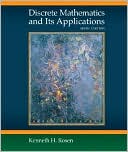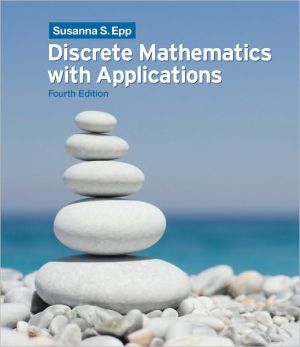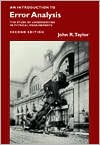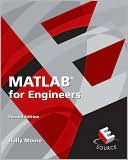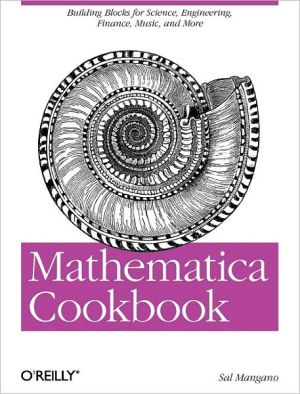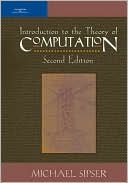Getting Started with MATLAB
MATLAB, a software package for high-performance numerical computation and visualization, is one of the most widely used tools in the engineering field today. Its broad appeal lies in its interactive environment, which features hundreds of built-in functions for technical computation, graphics, and animation. In addition, MATLAB provides easy extensibility with its own high-level programming language.\ Enhanced by fun and appealing illustrations, Getting Started with MATLAB employs a casual,...
Search in google:
MATLAB, a software package for high-performance numerical computation and visualization, is one of the most widely used tools in the engineering field today. Its broad appeal lies in its interactive environment, which features hundreds of built-in functions for technical computation, graphics, and animation. In addition, MATLAB provides easy extensibility with its own high-level programming language.Enhanced by fun and appealing illustrations, Getting Started with MATLAB employs a casual, accessible writing style that shows users how to enjoy using MATLAB.Features· Discusses new features and applications, including the new engine of symbolic computation in MATLAB 7.8 (released March 2009)· Provides two sets of self guided tutorials for learning essential features of MATLAB· Includes updated commands, examples, figure, and graphs· Familiarizes users with MATLAB in just a few hours though self-guided lessons· Covers elementary, advanced, and special functions· Supplements any course that uses MATLAB· Works as a stand-alone tutorial and referenceVisit the companion website at http://www.oup.com/us/pratap for more information on updates to MATLAB software.
Contents Preface 1 Introduction 1.1 What Is MATLAB?1.2 Does MATLAB Do Symbolic Calculations? 1.3 Will MATLAB Run on My Computer? 1.4 Where Do I Get MATLAB ?1.5 How Do I Use This Book? 1.6 Basics of MATLAB 1.6.1 MATLAB windows 1.6.2 On-line help1.6.3 Input-output 1.6.4 File types1.6.5 Platform dependence 1.6.6 General commands you should remember 1.7 Visit This Again2 Tutorial Lessons The Basics 2.1 Lesson 1: A Minimum MATLAB Session 2.2 Lesson 2: Creating and Working with Arrays of Numbers 2.3 Lesson 3: Creating and Printing Simple Plots 2.4 Lesson 4: Creating, Saving, and Executing a Script File2.5 Lesson 5: Creating and Executing a Function File Directional Explorations2.6 Lesson 6: Working with Arrays and Matrices 2.7 Lesson 7: Working with anonymous functions 2.8 Lesson 8: Symbolic Computation 2.9 Lesson 9: Importing and Exporting Data 2.10 Lesson 10: Working with Files and Directories 2.11 Lesson 11: Publishing Reports3 Interactive Computation 673.1 Matrices and Vectors3.1.1 Input 3.1.2 Indexing (or subscripting) 3.1.3 Matrix manipulation 3.1.4 Creating vectors 3.2 Matrix and Array Operations 3.2.1 Arithmetic operations 3.2.2 Relational operations 3.2.3 Logical operations3.2.4 Elementary math functions 3.2.5 Matrix functions3.3 Character strings3.3.1 Manipulating character strings3.3.2 The eval function 3.4 A Special Note on Array Operations3.4.1 Vectorization 3.5 Command Line Functions 3.5.1 Inline functions 3.5.2 Anonymous functions 3.6 Using Built-in Functions and On-line Help 3.6.1 Example 1: Finding the determinant of a matrix 3.6.2 Example 2: Finding eigenvalues and eigenvectors 3.7 Saving and Loading Data 3.7.1 Saving into and loading from the binary Mat-_les3.7.2 Importing data _les3.7.3 Recording a session with diary 3.8 Plotting Simple Graphs4 Programming in MATLAB: Scripts and Functions 4.1 Script Files4.2 Function Files4.2.1 Executing a function 4.2.2 More on functions4.2.3 M-Lint code analyzer 4.2.4 Subfunctions 4.2.5 Nested functions4.2.6 Compiled (parsed) functions: The p-code4.2.7 The pro_ler 4.3 Language-speci_c Features4.3.1 Use of comments to create on-line help4.3.2 Continuation4.3.3 Global variables 4.3.4 Loops, branches, and control-ow4.3.5 Interactive input 4.3.6 Recursion 4.3.7 Input/output4.4 Advanced Data Objects4.4.1 Multidimensional matrices4.4.2 Structures 4.4.3 Cells 4.5 Publishing Reports 5 Applications 5.1 Linear Algebra5.1.1 Solving a linear system5.1.2 Gaussian elimination 5.1.3 Finding eigenvalues and eigenvectors 5.1.4 Matrix factorizations 5.1.5 Advanced topics 5.2 Curve Fitting and Interpolation 5.2.1 Polynomial curve _tting on the y 5.2.2 Do it yourself: Curve _tting with polynomial functions5.2.3 Least squares curve _tting5.2.4 General nonlinear _ts5.2.5 Interpolation5.3 Data Analysis and Statistics5.4 Numerical Integration (Quadrature) 5.4.1 Double integration 5.5 Ordinary Di_erential Equations 5.5.1 Example 1: A _rst-order linear ODE5.5.2 Example 2: A second-order nonlinear ODE 5.5.3 ode23 versus ode45 5.5.4 Specifying tolerance 5.5.5 The ODE suite5.5.6 Event location 5.6 Nonlinear Algebraic Equations 5.6.1 Roots of polynomials5.7 Advanced Topics 6 Graphics 6.1 Basic 2-D Plots 6.1.1 Style options6.1.2 Labels, title, legend, and other text objects6.1.3 Axis control, zoom in, and zoom out6.1.4 Modifying plots with the plot editor6.1.5 Overlay plots 6.1.6 Specialized 2-D plots6.2 Using subplot for Multiple Graphs 6.3 3-D Plots 6.3.1 View 6.3.2 Rotate view 6.3.3 Mesh and surface plots 6.3.4 Vector _eld and volumetric plots 6.3.5 Interpolated surface plots6.4 Handle Graphics6.4.1 The object hierarchy6.4.2 Object handles 6.4.3 Object properties 6.4.4 Modifying an existing plot 6.4.5 Complete control over the graphics layout 6.5 Fun with 3-D Surface Graphics6.5.1 Generating a cylindrical surface6.5.2 Face color, transparency and light reection6.5.3 A little more fun with color and lighting6.5.4 A word about choosing colors 6.6 Saving and Printing Graphs 6.6.1 Saving graphs to reusable _les 6.7 Animation 7 Errors 8 Computer Algebra and The Symbolic Math Toolbox 8.1 The Symbolic Math Toolbox 8.1.1 Should you buy it? 8.1.2 Two useful tools in the Symbolic Math Toolbox 8.2 Numeric vs. symbolic computation 8.2.1 Variable Precision Arithmetic8.3 Getting help with the Symbolic Math Toolbox 8.4 Using the Symbolic Math Toolbox 8.4.1 Basic manipulations8.4.2 Talking to itself 8.4.3 Generating MATLAB code for an inline or anonymous function8.4.4 Generating M-_les from symbolic expressions8.5 Using MuPAD Notebook8.5.1 Graphics and animation8.6 Summary: Some Symbolic Math Toolbox commands9 Honorable Mentions 9.7 Debugging Tools9.8 External Interface: Mex-_les 9.9 Graphical User Interface A The MATLAB Language Reference A.1 Punctuation Marks and Other Symbols A.2 General-purpose Commands A.3 Special Variables and Constants A.4 Language Constructs and Debugging A.5 File Input/Output A.6 Operators and Logical Functions A.7 Frequently Used Math Functions A.8 Matrices: Creation and Manipulation A.9 Character String Functions A.10 Graphics Functions A.11 Some Applications Functions A.11.1 Data analysis and Fourier transforms A.11.2 Polynomials and data interpolation A.11.3 Nonlinear numerical methods Bibliography Index

